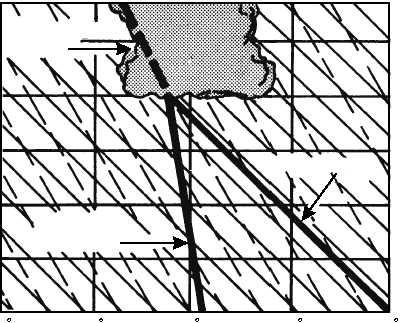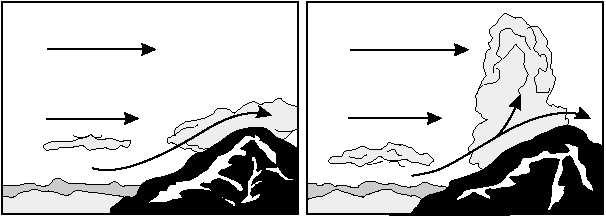1000 = 4,000 feet). This is graphically shown in figure
2-16.
This method cannot be applied to all cloud types. It
is limited to clouds formed by convection currents, such
as summertime cumulus clouds, and only in the locality
where the clouds form. It is not valid around maritime
or mountainous areas.
Stability in Relation to Cloud Type
The degree of stability of the atmosphere helps to
determine the type of clouds formed. For example,
figure 2-17 shows that if stable air is forced to ascend a
mountain slope, clouds will be layerlike with little
vertical development and little or no turbulence.
Unstable air, if forced to ascend the slope, causes
considerable vertical development and turbulence in
the clouds. The base of this type of cloud can be
determined by mechanical lifting as analyzed on a
Skew-T.
REVIEW QUESTIONS
Q2-11. What are the two basic kinds of atmospheric
energy?
2-22
MOIST ADIABATIC
IN CLOUD
DEWPOINT
LAPSE RATE
DRY ADIABAT
40
50
60
70
80
5,000
4,000
3,000
2,000
1,000
THE AIR
DEGREES FAHRENHEIT
AG5f0216
Figure 2-16.—Determine of cloud's base when the dew point and temperature are known.
AG5f0217
UNSTABLE
AIR
STABLE
AIR
Figure 2-17.—Illustration showing that very stable air retains its stability even when it is forced upward, forming a flat cloud. Air
which is potentially unstable when forced upward becomes turbulent and forms a towering cloud.




